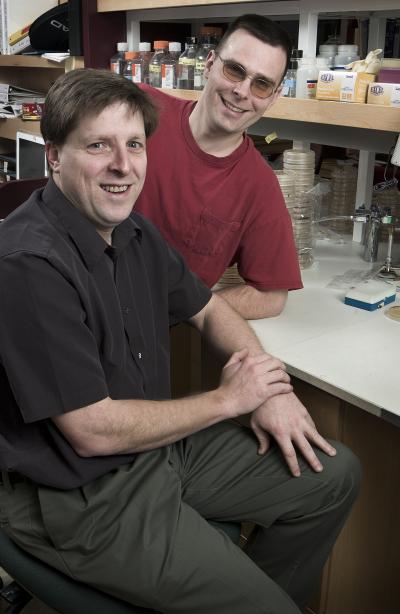April 7, 2005
New project will look for longevity genes shared by many species
If a real Fountain of Youth existed, would its magical waters affect humans and other species in the same way? Recent evidence from investigators working on the genetics of longevity suggests that many of the same genes determine longevity across different species.
Great strides have been made in research on aging in the last decade with the advent of new high-throughput technologies, which allow large amounts of data to be captured and processed at high speeds, and the emergence of invertebrate model systems that provide ways to quickly isolate and study the genes and cell functions that affect the aging process. Evidence that single gene mutations can significantly increase the life span of rodent species has also greatly stimulated interest in the genetics of aging. Through a $2 million grant from the Ellison Medical Foundation, established by Oracle CEO Lawrence J. Ellison, UW experts in research on aging and molecular biology will establish a Consortium for the Determination of Public Pathways Longevity. The Consortium will combine approaches in different model organisms to rapidly identify, verify and characterize a majority of the aging genes common to different species. The results of this five-year project will serve as an unparalleled resource for study of the genetic elements and public pathways, those commonly occurring mechanisms happening at the molecular level, that may extend lifespan.
There are several features that make the UW an exceptional location for this endeavor. UW scientists have developed new high-throughput technologies that speed the identification of previously unknown genomic factors that regulate aging, as well as the ability to generate large numbers of specialized mouse models. The UW team is also able to perform longevity phenotyping, a way to identify and categorize the genetic and environmental determinants of aging by measuring rates of change in organisms during the aging process. In addition, the work of these scientists spans the spectrum of the most informative model systems – yeast, roundworms (C. elegans) and mice – providing for a broader study and understanding of aging.
The principal investigator, Dr. Brian Kennedy, assistant professor of biochemistry, has focused on the biology of aging for several years.
“With the innovative tools and approaches we are able to employ here at the University of Washington, specifically with respect to the Ellison-funded project, we hope to have a major impact on the study of aging,” explains Kennedy. The University’s Nathan Shock Center for Excellence in the Basic Biology of Aging, directed by the Ellison Consortium co-principal investigator, Dr. Peter S. Rabinovitch, will serve as a key partner in the project. The Nathan Shock Center is well known for its high-caliber aging research and ability to generate a large number of mouse models for aging studies. Other investigators participating in the project include Dr. Stan Fields, who will assist with genomic approaches to yeast aging, and Dr. Jim Thomas, who will assist with worm aging studies. Both are professors in the Department of Genome Sciences.
The Consortium project plans to begin with high-throughput screening for genes that affect lifespan in yeast, proceeding next to validation of these results in worms. Gene mutations found to increase lifespan in both yeast and worms will then be examined directly in a mammalian system, by deleting (“knocking-out”) those genes in mice. Since yeast and worms are highly divergent model systems, the UW scientists believe that if the same gene influences aging in these two organisms, the corresponding mouse gene is likely to influence aging as well. The next step will involve testing the phenotype of dozens of mutations in the mouse model, then the longevity of the more promising mouse models will be determined.
The lifespan analysis of the yeast genome is projected to be completed within two years, with analysis of genes in worms completed in an additional year. Generation of mouse models, led by Dr.Warren Ladiges, professor of comparative medicine, will begin early in the first year and continue as new gene candidates are identified. Phenotypic evaluation of longevity biomarkers, (characteristics that occur normally in the aging process, such as changes in metabolism), and lifespan analysis of the most robust mouse models, which are the most time-consuming of the steps, will be the focus of the third through fifth years.
Beyond increasing understanding of the mechanisms regulating aging, the Consortium will generate an infrastructure of resources for the scientific community:
- extensive databases
- readily available yeast strains and mouse models
- a collaborative longevity phenotyping service available for yeast, worms and potentially mice.
“The research that we are carrying out here at the UW has unquestionable potential. Knowing that our work will create resources for other scientists is exciting for this entire field of study,” comments Dr. Matt Kaeberlein, a co-investigator and senior fellow in pathology.
For information on the Foundation, see http://www.ellisonfoundation.org.

